How many of you know what Botswana is? Exactly, not many. In this article, we are going to talk about the little-known country of Botswana. So enjoy and read some interesting facts about Botswana!
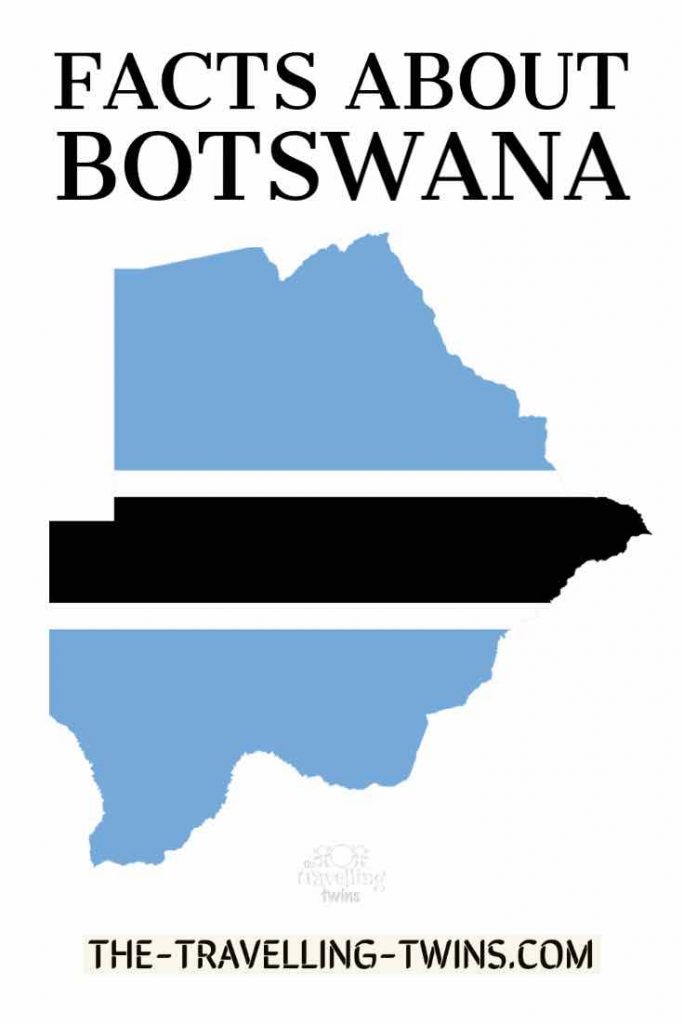
Symbols of Botswana
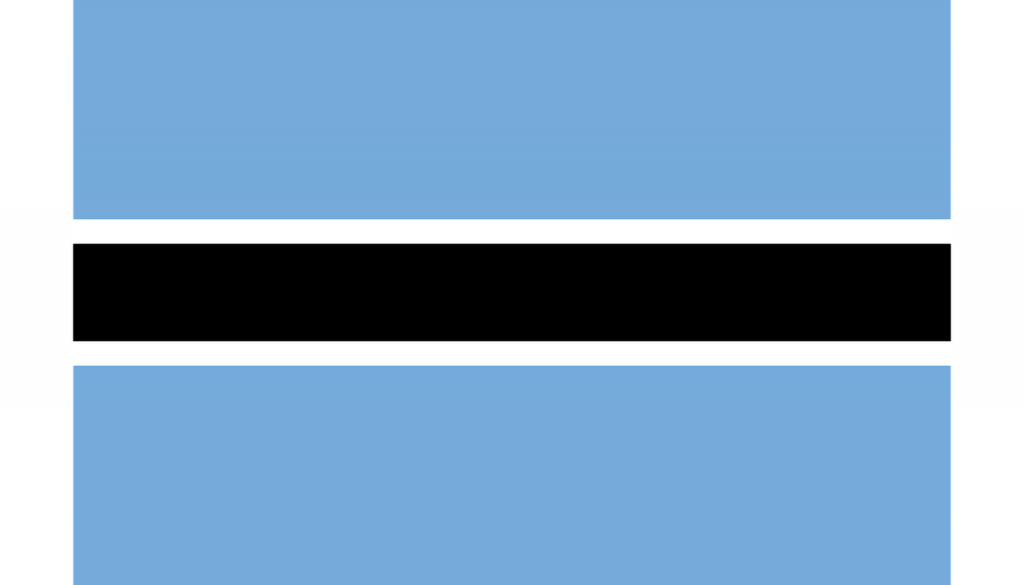
The nation’s flag consists of a light blue background with an even black stripe cutting across the middle horizontally with white slim stripes around it. The blue color represents sky and water. The White black white colours of the flag represent the peaceful coexistence between races in Botswana.
The national animal of Botswana is the Burchell’s Zebra, which also appears on the Coat of Arms.
English is the official language of the country, is taught in schools, and is widely spoken in all city centers.
Location of Botswana
Botswana is a landlocked country located between South Africa, Namibia and Zambia. It’s the size of France or Texas but with less than one-tenth the population (two million people). The majority ethnic group are Tswana, but there are also Kalanga groups, as well as smaller groups of Afrikaans, Zimbabwean and Indian descent.
Botswana and Diamonds
Botswana is the world’s largest producer of diamonds, accounting for over 25% of global production.
Botswana also exporting diamonds, copper ore, nickel, uranium and coal (though declining) from its mines. The country is considered a middle power as it has had recognition for “its vibrant democracy.”
Richest and the Poorest Country at the same time
Botswana is one of the richest countries in Africa with a GDP per capita that exceeds South Africa’s (though it has been declining over time). It was ranked by The Heritage Foundation as the second freest economy on earth after Hong Kong. Botswana experiences its highest economic growth and development through a well-established, diversified economy with strong ties to the global marketplace. However this economic wealth has not been shared with its citizens.
Botswana has one of the highest poverty rates. In 2017, it ranked second on the Fragile state’s index by The Fund for Peace. It also ranks as among world’s least developed countries (180th) according to UN development
Since the 1990s, Botswana has been one of the worst countries in Africa to get HIV/AIDS.. The adult HIV prevalence in Botswana is over 24%.
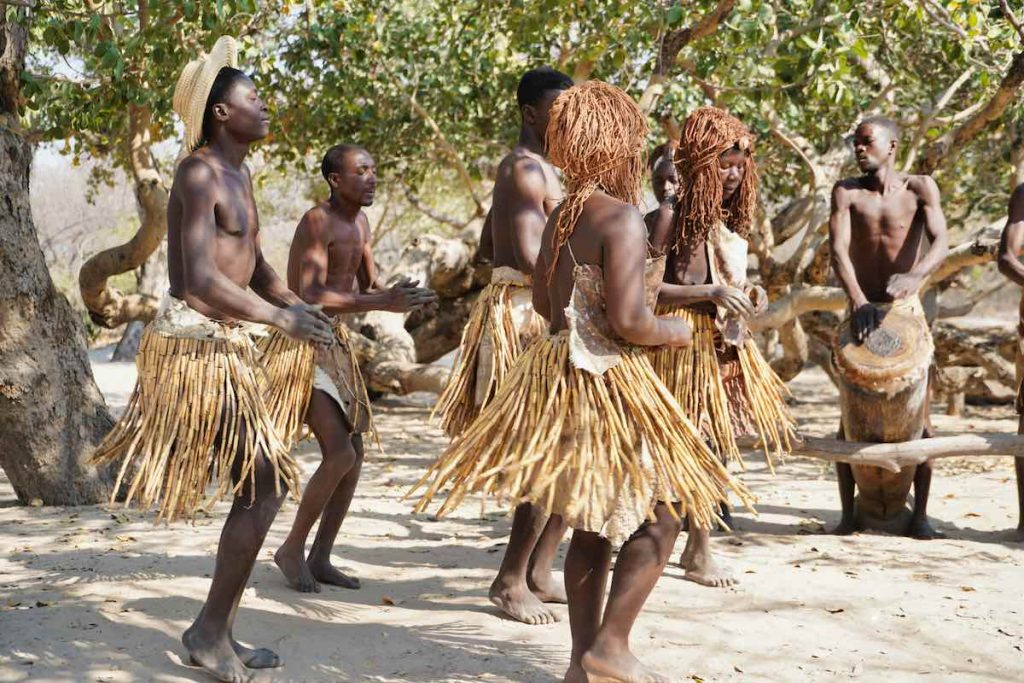
Largest City Of Botswana
The largest city and the capital of Botswana is Gaborone with a population of 231,626 people as of the 2011 census.
The other biggest cites are Francistown, Molepolole, Selebi-Phikwe and Maun.
Agriculture is Botswana
Agriculture is Botswana’s largest employer (with about one in five citizens employed). Camel milk is an important part of this sector; as much as 70% of all dairy products consumed in Botswana are from camels. Mopane worms are also significant contributors to the agricultural sector and are an important food security issue in Botswana.
If you want to learn more about the Mopane worms read our article about weirdest food in the world.
Things to see in Botswana
About 38% of the country’s territory is devoted to national parks, reserves and wildlife management areas. That’s more than most other countries.
More than 150 species of mammals inhabit this country. Botswana is also home to a large number of big five game animals – lions, leopards, elephants, buffalo, and rhinos.
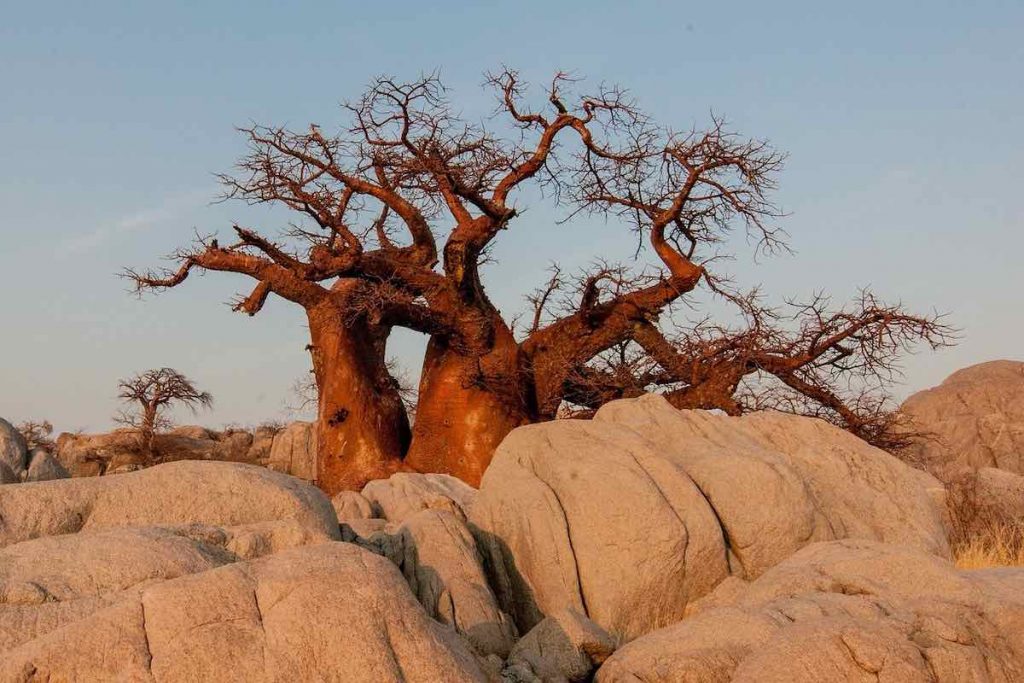
Botswana’s highest point is, at an altitude of 3400m (11170ft), located on one of the country’s main borders with Mozambique.
Botswana Kalahari Desert
Botswana Kalahari Desert is the world’s oldest desert. you can meet here the most famous animal, the African elephant. The Kalahari Desert is the world’s second-largest sand desert, covering an area of over 900,000 square kilometres (350,000 sq mi). The term “Kalahari” comes from a !Kgalagadi word that means “a vast dry sandy plain without trees or bushes”. This region has been home to humans for about two million years.
The Okavango Delta
The Okavango Delta is one of the world’s largest inland deltas, and it has been a UNESCO World Heritage Site since 1999. It was formed by tributaries from Angola’s Zambezi River flowing into Botswana; this area experiences rainy season flooding about once every three years on average. The delta covers over 20,000 square kilometres. Has a rich ecosystem with rare species of plants like the Baobab tree. There are more than 150,000 islands in the Okavango Delta. Ther sizes vary from a couple of meters to a few kilometres. The Okavango Delta It’s so unique that it became a UNESCO Heritage Site.
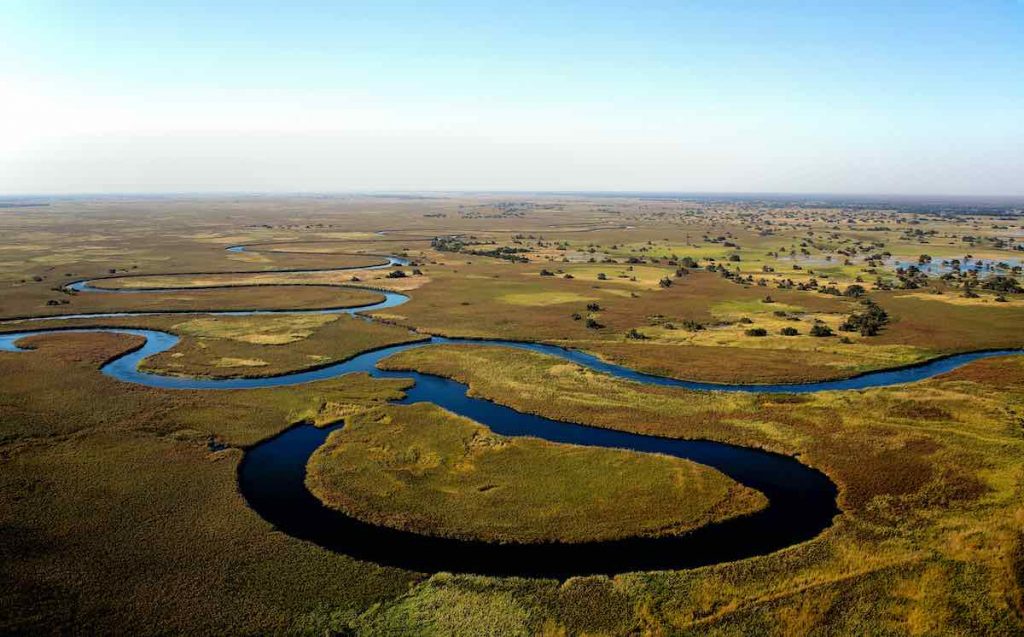
The Tswapong Hills are the only hills in Botswana and can be found between Lobatse and Gaborone on the road to Francistown (the country’s second-largest city). They have a maximum height of 950 metres above sea level.
The Makgadikgadi Pan
The Makgadikgadi Pan is a salt and clay pan in Botswana. The area features some of the planet’s most ancient rock formations, including rich deposits, called banded ironstones (BIFs), that were laid down as sediments about two billion years ago by an inland sea on Earths’ surface.
National Parks in Botswana
Chobe National Park is one of the most popular attractions in Botswana and is also one of the destinations with the highest density of elephants in Africa.
Moremi Wildlife Reserve: The Moremi Wildlife Reserve is one of the most beautiful wildlife sanctuaries in Africa and is a perfect destination when trying to see high densities and varieties of wildlife.
Interesting facts about Botswana – Pin it



Privacy Policy Disclaimer
This website uses affiliate links for income and support.
If you like our website, please consider using these links. You will be directed to the vendor, and we will get a small commission on your purchase price at no increased cost to you.
We have researched facts stated here as far as practicable but please check anything critical before committing your time and money. We do not claim any special knowledge or expertise, and we are not consultants for our readers.